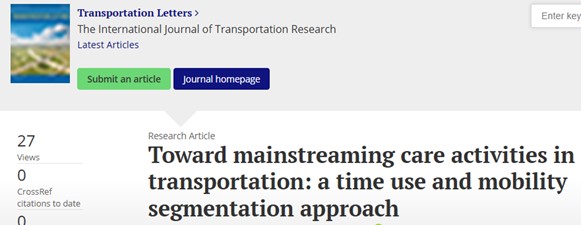Sebastián Henríquez, Juan Antonio Carrasco & Sebastián Astroza
ABSTRACT
This paper assesses the importance of incorporating care dimensions into activity-travel segmentation to understand daily life mobility strategies. The data came from six neighbourhoods in Concepción, Chile, and included detailed information on activity-travel time use and interaction and classification schemes to identify care purposes. The study uses self-organizing maps to build incremental behavioural segments from weekly mobility and time use variables, adding care activities to assess their role in this segmentation. The results identify groups with a higher burden on care than others, emphasizing the role of transport mode and time use patterns. The result remarks caregiving activities hidden within other categories, identifying groups of caregivers, including domestic workers and women who work and have intense accompanying activities with children. The results highlight the differences between mobility patterns between different segments to make more invisible care and other related activities disproportionately performed by groups of women.
